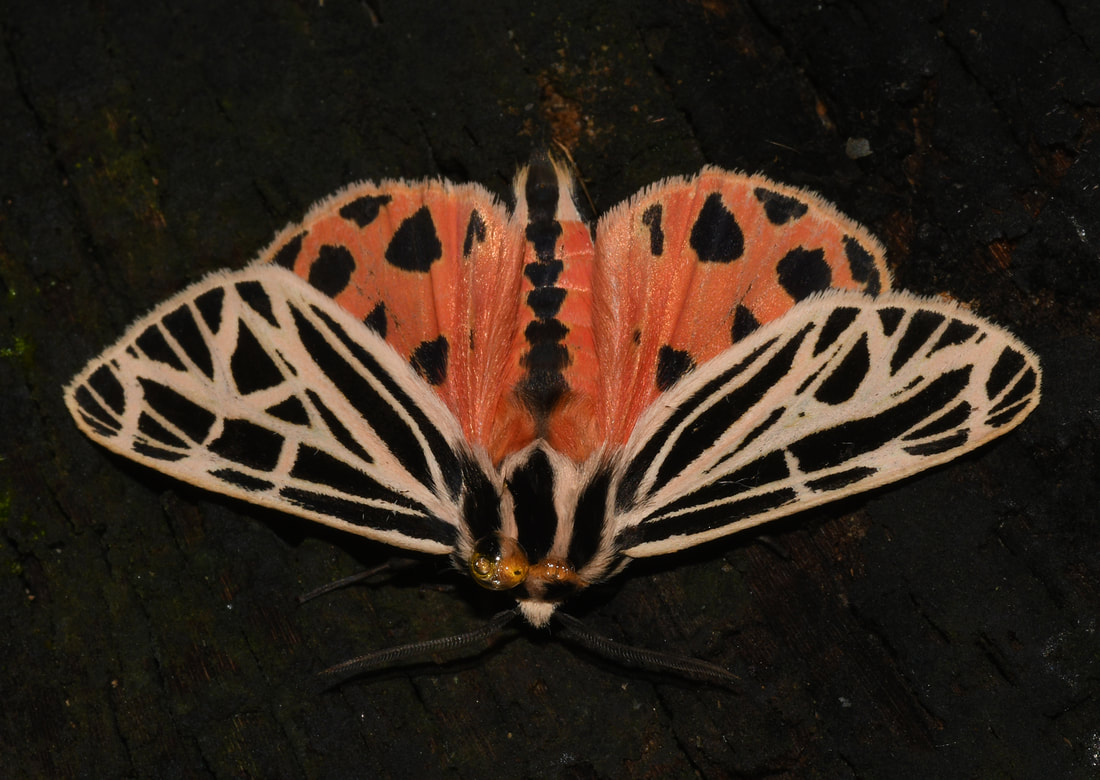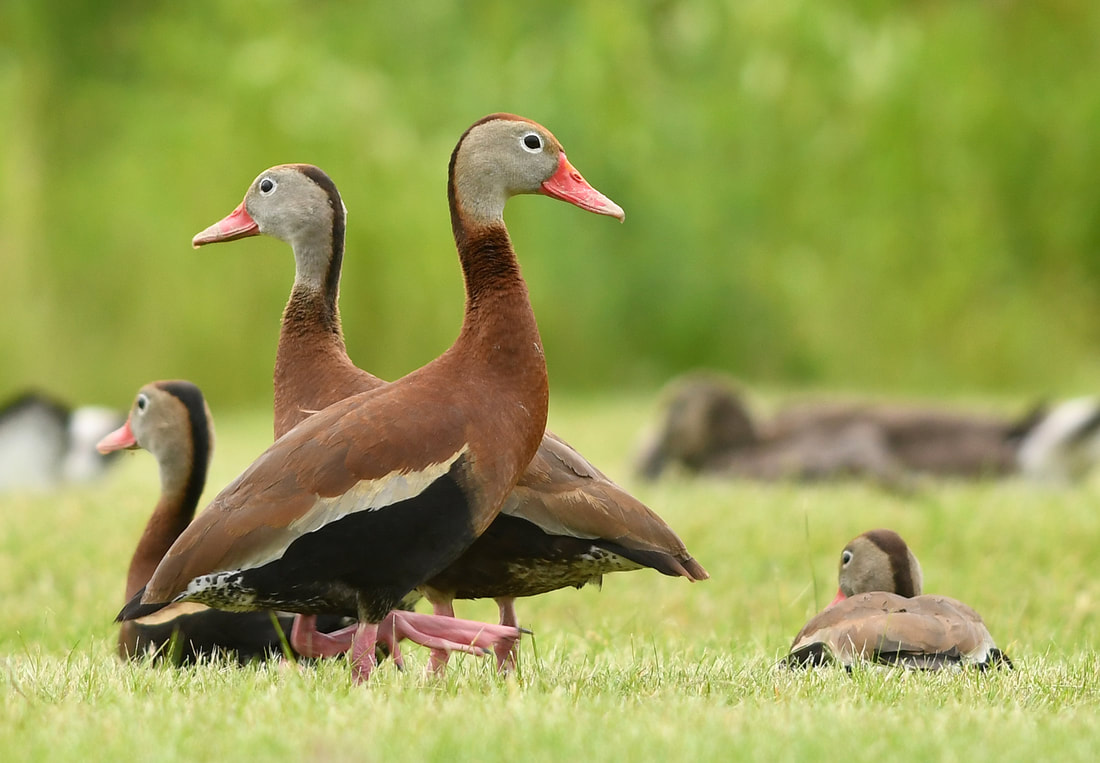|
For the second year in a row I participated in National Moth Week, an event hosted on the website iNaturalist. Between the dates of July 16 and 25, any observation of a moth that was submitted to iNaturalist would be added to a Project which aggregates all of the sightings. Here in Ontario, we have a province-specific Project.
0 Comments
The early summer is always a busy time for a naturalist here in Canada. My June and July have been pretty typical, with long hours in the field completing bird surveys and other inventories (my day job). I have been mothing in the evenings whenever my schedule allows, while I have filled in the gaps by searching for butterflies, herping, botanizing and the odd rare bird twitch. As a result, the blog often gets neglected. When I am home and in front of a computer, I have such a backlog of photos and recordings to go through and upload to iNaturalist and eBird that a blog entry isn't even considered.
Now that I have crested the peak of my busy early-summer work schedule, I will be attempting to write a little more frequently than just monthly. We will see how that goes! First up - a post about some of the rare bird highlights from this month. Bioblitzes have been around for a while, but only in recent years have they have become more mainstream. What is a Bioblitz? Essentially, it is a biological inventory conducted over a particular area by a group of people, during a 24 hour time frame. Birders are familiar with the concept of a Big Day; a Bioblitz is the same thing, except that every species counts (not just birds!).
May 2021 has been, generally, a poor one from the perspective of a birder in southern Ontario. Days with large numbers of migrant songbirds have been few and far between, to put it generously, and we have not experienced any epic days with warblers "dripping from the trees", as they say. I have heard concerns from several birders that this may be an indictment on the poor state of our bird populations, because they have not seen many migrants in their local patches this month. While there are many valid reasons to be concerned about bird populations (which have been plummeting around the world - hardly a surprise given our burgeoning human population and excessive consumption of resources), the fact is there is another reason why we have not seen birds in numbers that we may have been accustomed to from previous years.
It is finally here. May is, without a doubt, my favourite time of year to be a naturalist in Ontario. Signs of life are everywhere, but the main draw for me is the rush of bird migration. The spring of 2021 has turned out much differently than I had planned. Originally, I was scheduled to spend much of the month on Pelee Island, in the Point Pelee area, and in Prince Edward County leading bird tours, with plenty of time built into my schedule for some non-tour birding (and mothing!) as well. But, like just about every other plan that I have made in the last fifteen months, it fell through. The timing of Ontario's latest lockdown has coincided exactly with the peak of spring bird migration, and I haven't been able to lead any tours due to the current restrictions in place.
Unfortunately, Point Pelee is not in the cards for me this spring as I have been staying closer to home. Laura and I are currently residing in Fonthill, located in about the exact middle of the Niagara Peninsula, and great birding areas can be found just a short drive away. The Hamilton Study Area is a circle with a radius of 25 miles (~40.2 km) that is centred on Dundurn Castle in Hamilton, Ontario. It is the official area of study for the Hamilton Naturalists Club, and many local birders keep an HSA list. For some, this is their most revered bird list. For me, it is a few rungs lower (following my World List, Canada List, Ontario List, World Photographed List, Ontario Photographed List, and a few others), but I always jump at the chance to add a new species to my HSA list. I grew up in south Cambridge, which is situated within the western boundary of the HSA. My formative years as a birder took place predominately in the HSA; not only in south Cambridge, but also in south Guelph where I attended university. In the years since, I have lived elsewhere, though the HSA has always been just a short drive away. In recent weeks the HSA has produced several fantastic rare birds; the crown jewel being the Yellow-browed Warbler (Canada's 2nd ever record), but more on that bird in a minute. All told, I have added three species to my HSA list recently, bringing it up to 309. A good start.
As the calendar flipped over to April, the warm spring weather continued unabated. On April 5 Laura and I, along with my parents, visited a beautiful natural area close to where they live in Cambridge. It was my first visit to this particular forest this spring and I was hoping to observe some Northern Ribbonsnakes. I have visited this particular site several hundred times over the years and I never tire of the ribbonsnakes!
My last post covered some of my mothing excursions from early this spring. I have been getting out during the day as well, and have taken my camera with me some of the time. Below are some of the diurnal spring highlights so far from the second half of March.
Early spring is one of my favourite times of the year to be a naturalist. Winter in Canada is far too long for my liking and naturalizing opportunities are few and far between. There is only so much winter birding I can do, and identifying frozen mosses or undertaking winter plant ID only holds my interest for so long.
As the snow recedes and the temperatures warm up, migrant birds appear - first waterfowl and Horned Larks, then waves of robins, blackbirds and Killdeers, and eventually the kinglets, creepers, and sparrows in early April. Observing each "first of year" species brings a smile to one's face, while also providing a reminder of the waves of migration still to come. Observing the phenomenon of bird migration really gets my blood pumping! The title of this post may seem strange, given the beautiful spring weather that has arrived in Ontario in recent days. But even as southern Ontario sees temperatures soaring to the high teens, with frogs singing and migrant birds arriving by the minute, it was not that long ago that I was surrounded by cold, crisp weather in northern Ontario. Winter held the landscape firmly in its icy grip, and signs of spring were quite difficult to locate. Even the migrant American Crows had not made it this far north.
|










 RSS Feed
RSS Feed